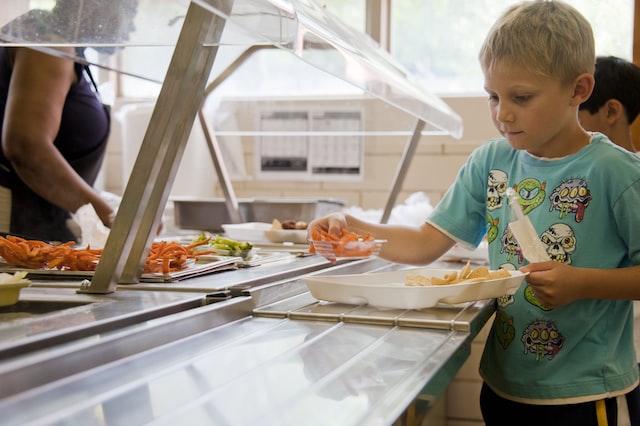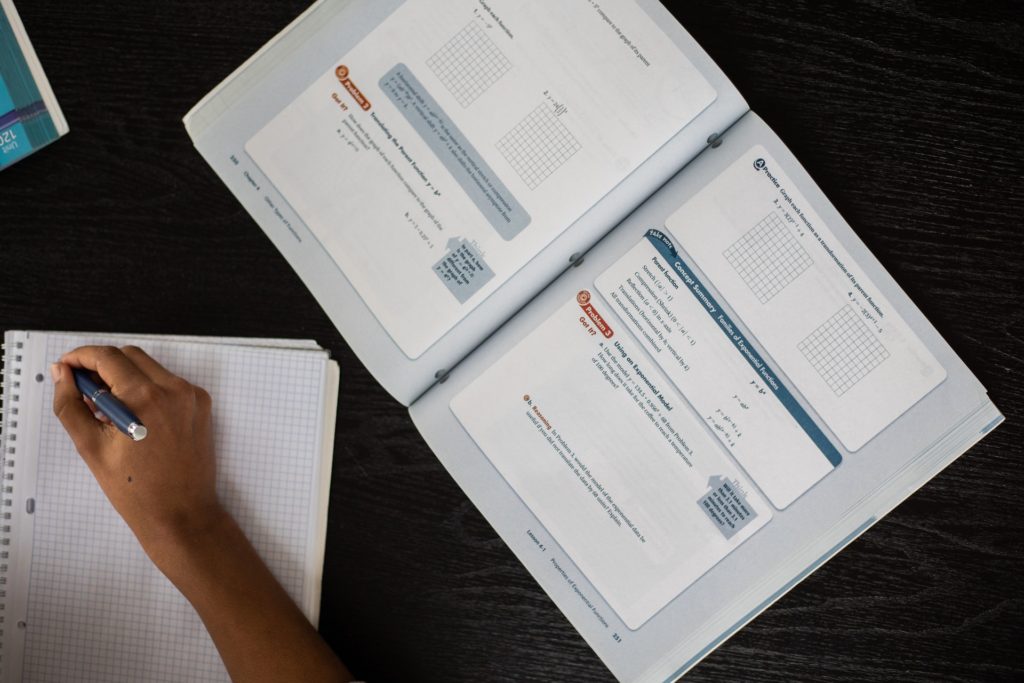Table of Contents
Schools always struggle to decide how to allocate very limited funds in order to provide the best possible experience for their students and properly prepare them for the world after graduation. While many things like textbooks, smartboards, and new buildings are possibly worth investing in, if there is one thing besides teachers that is absolutely worth the investment, it’s a regular nutritious school lunch for children.
Many schools, especially in the United States, seem to have the money to invest in laptops for every student and expensive sports gear for contact sports which measurably damage students’ brains even after one semester of play, but at the same time feed their students cheap highly processed foods such as pizza, chicken nuggets, and french fries. When students are served vegetables, they are often tasteless and boiled, overly salted, or slathered in unhealthy salad dressings.
The United States is not the only country who has struggled with the questions of how best to deal with school food, however. This article will take a look at five different areas around the world and some of the problems they have faced when making decisions around school food. Each will be paired with research based suggestions on how to tackle the issue and explain why school food should be a top priority for any school budget.
Lessons from School Lunch Programs Around the World
South Korea – School Lunch is Important for Mental Health
Schools in South Korea generally provide a government subsidized free lunch for all students. One province in the Southern end of South Korea named South Gyeongsang decided to try to cut costs by no longer providing free lunch for primary and secondary students.
The move was highly criticized by the population and eventually the decision was reversed and free lunches were again provided to all students the following year. However, the year without free lunch provided researchers with an interesting case to measure the results of the experiment and test whether the move was just unpopular or actually harmful in other measurable ways.
While people generally consider the physical health benefits of nutritious food, the study provided insight into the negative mental health effects of not providing students with healthy food. The lack of free food provided by the school did negatively affect students’ BMI, especially for female students, but the study also found that it had a negative effect on the mental health of the students as well.
According to the researchers, “crying without any reason increased when the free-school-lunch policy was abolished and it decreased when the policy was reintroduced.” (Bethmann, and Cho) South Korean schools are known to be highly competitive and stressful environments. Regular healthy meals for the students was clearly a factor in helping them to keep up their resilience and keep negative thoughts at bay while working hard at school.
As schools continue to raise standards and challenge students to compete against more and more classmates, healthy food could be the make or break factor in helping students to not fall apart in mental health crises. Healthy food gives the body and the mind fuel to be able to energetically tackle the day’s challenging tasks. Poor quality food or a lack of food entirely leaves the body and mind lethargic and foggy, lowering the capabilities of even the strongest students and making things even more impossible for those struggling to cope.
Nordic Region – Free School Lunch Decreases Poor Eating Decisions
Some people may understand the benefits of healthy food for the body and mind, but wonder whether it should really be the job of schools to provide that rather than parents sending students with healthy packed lunches. This is a question that several Scandinavian countries have been struggling with over the past decades.
A recent study was done comparing the different approaches to school lunch in the various countries in the Nordic region and how these policies affected students’ eating choices. In Sweden and Finland, students are provided with free hot lunch that is subsidized by the government, while in Denmark and Norway students are generally expected to bring a lunch for themselves.
The study found that “the number of Danish and Norwegian adolescents eating in the school dining room or buying food from the cafeteria 1–2 times a week, eating snacks and candy for lunch, or not eating anything at all at school (i.e. eating according to an unconventional eating pattern) was higher than for Finnish and Swedish adolescents.” (Kainulainen et al.) This shows that not providing a regular healthy meal leads students to more often making unhealthy choices at lunch like eating junk food or skipping lunch altogether.
All four countries have a fairly well-to-do population, good social welfare programs for those struggling, and tend to score high in many measures of happiness and success. Even still, the different policies around providing school lunch led to a measurable difference in how children ate in school.
This shows that schools that provide regular healthy meals not only help students who are struggling economically, but also help students to have regular healthy habits. Rather than only occasionally or even most of the time eating healthy, students who are provided with healthy food daily are guaranteed to have the fuel their body needs for school and will be more likely to develop healthy habits around eating rather than resorting to junk food and skipping meals.
United States – School Food Improves Grades
Some stingy school administrators may still feel that it is not their job to be feeding students, but to focus on using money to improve educational attainment. However, research shows that not only is regular healthy food important for a healthy mind and body, but measurably improves students’ grades as well.
Studies done in the United States have shown that providing free and healthy school meals leads to improved math grades and standardized test scores. (Anderson et al.) (Frisvold) One of these tests was even done using a school breakfast program, which shows it is not just a question of lunch, but about feeding children healthy food in general.
Students, just like all humans, need nutritious fuel to do their best work. Nutritious food keeps people alert, helps improve memory, and gives them the energy to not give up in exhaustion. Schools that can provide not only the content for students to learn, but also the fuel and environment to help them learn that content will be far more successful than schools who simply say feeding children is not their job.
Ethiopia – Nutrition Education is not Enough
Providing healthy food for students is only part of the battle, however. The second battle is actually getting them to eat that nutritious food and not simply eat around the vegetables and other less exciting foods.
A school in Ethiopia’s Tigray region found a novel way of getting kids excited about eating healthy and unfamiliar foods. Rather than simply telling students that they needed to eat their vegetables because they are good for them, the schools linked foods with aspirational figures.
While this type of propaganda might seem a bit eerie and many may question whether simply connecting a food with a figure will actually get kids to change their food choices, anyone who has walked down a cereal aisle in the grocery store will know that it is almost guaranteed to work.
One of the most famous examples of a character or figure being used to encourage healthy eating is Popeye the Sailor Man. Popularized in the 1930s and beyond, he became famous for gaining powered up muscles every time he ate a can of spinach before a fight.

Popeye was found to increase spinach consumption in the US by a significant amount, up to 33% by some estimates. (Mould) Simply connecting a food with a fun or inspiring character can get kids to eat foods they otherwise would not touch.
Businesses have been using this practice for years to get kids excited about their brands and beat out the less exciting competition. The school in Ethiopia found that this strategy also works in schools.
They compared using inspirational figures and educating students about nutritional facts to simply teaching nutrition facts. Unsurprisingly, the kids were far more motivated to eat the food connected with the fun and inspirational character rather than just making good choices for their health.
In fact, according to the study, “Provision of the information in the absence of the aspirational character did not detectably affect consumption.” (Okello et al.) Children are often too young to make good choices based on abstract ideas like their future health.
Honestly, this is not something that is only an issue for children as many adults also struggle to make healthy eating choices. The school in Ethiopia shows that people often need another source of encouragement beyond just making good choices to eat healthy.
Japan – Get Children Actively Involved to Teach Many Food Based Lessons
Japan is known for being one of the most organized countries when it comes to school food. Not only is it extremely healthy and heavily subsidized, but students themselves are actually in charge of serving one another and cleaning up after eating.
In 2008, Japan updated its approach to food based on a concept called “Shokuiku”. (Tanaka, and Miyoshi) Shokuiku roughly translates to “food education” but it is a lot more than just a basic home economics class. The concept of Shokuiku is about getting kids more actively involved in food preparation so that they not only have an academic understanding but also practical experience with healthy eating.
Japan hires nutritionists to create a standardized set of healthy meals that students are required to eat to ensure they are prepared for their days of rigorous study. More than just providing healthy options, in Japan, students are required to eat what is provided and are not allowed to bring their own food from home.
Especially strict in elementary school, students are required to clear their plates before they are allowed to be finished. Just like parents, schools in Japan don’t allow students to be wasteful or not eat the healthy food prepared for them.
While there are staff in place to prepare the meals, students are often intimately involved in the process and are in charge of serving the food and cleaning up after meals. Students all eat together in their classrooms in elementary school and also serve their teachers.
Young students often also plant food in small gardens at school to gain an understanding of the entire food cycle from growing to cooking, eating, and properly disposing of food and utensils. This creates students who are not spoiled, expecting food to appear on their plates and be cleaned up by others.
Bringing it All Together

So how can schools use these lessons to make better decisions for their students? There are many approaches that work for different cultures, governments, and school districts around the world, but there are several clear lessons that are universal.
The first is that healthy nutrition is absolutely worth the investment. Whether it is the physical or mental health benefits, the improved grades, or the lessons students can learn about eating healthier that students can use for a lifetime, there are myriad moral and academic benefits to school food programs. School food programs help ensure that all children get these benefits as well instead of only those with intelligent and capable parents.
Often those against welfare programs complain that the poor need to work harder instead of having everything handed to them. This argument is invalid with children as they can not work harder to pay for their own healthy lunches. They are stuck with the parents they were born to. These programs ensure that those children have the nutritional fuel and energy to break the cycle of poverty and have a higher chance of being productive members of society.
The second lesson is that children are going to need help to make better choices with food. There are many approaches to helping them to choose better things, but oftentimes this involves removing temping low quality foods and making healthier choices more appealing.
In Japan, they ensure this by making all children eat the healthy school food rather than relying on unreliable parents to send students with good food. However, school lunch is not entirely free in Japan, still costing most students about $2.50 per meal unless they qualify for additional subsidies. The Nordic region shows that reducing costs further, to free if possible removes more barriers and helps students get healthy food more regularly.
The third lesson is that good food needs to not turn kids off. Ethiopia gives a fun and creative solution by having certain foods connected with fun characters or inspirational figures to go beyond preachy nutrition messages that sometimes even have trouble convincing adults to eat better.
However, this is not the only way to make good food more appealing. A study in the US found that “novel food pairings and visibility of legumes” caused children to throw away more of their food. (Lindke et al.)
Juices and blended drinks are very trendy right now, and they do not always have to be so expensive as the juice bars make them seem. They can either be milk or water based and allow for many healthy ingredients to be snuck inside that children will not even notice. Spinach, cucumbers, squash, and a wide range of other foods blend invisibly to make delicious green drinks that kids can either drink during lunch or take with them to finish during classes when they need a boost.
If schools focus on giving simple inexpensive recognizable base foods like rice, couscous, quinoa, and bread along with a small amount of protein, the shakes can take the place of the tasteless and often wasted vegetables on the plates. This approach will cut costs, reduce plate waste, and provide students with nutrients that they can enjoy throughout the afternoon rather than hitting an after lunch energy slump.
Students can either have their own fun drink containers they bring from home that show off their personality, or be given school branded drinkware to rep their schools. Having a drink container that they can take to class will also encourage them to drink more water, whether that be the water in their shakes or in water they refill from a drinking fountain.
Lastly, students need to be given a lot more responsibility in food preparation and cleanup. Rather than having children get used to someone serving them and cleaning up after them, longer lunch periods should be allocated for students to serve and clean up their own lunches.
This reduction in staff requirements will also help to pay for the better quality food. This approach will teach students to be respectful of their spaces, get them into good habits, and learn to serve their peers with respect. Having students hand out shakes, portion out meals, and be on cleanup duty will not be much different from many of the classroom jobs that students already are given in elementary school.
Conclusion
These changes are not really that radical, but require a mindset change from lunch being a period where students need to quickly get something in their stomachs to rush back to class to fall into a food coma in the unlucky period after lunch to a period of education equally important as any history, science, or math class.
The lessons that can be taught during the lunch period are less measurable, but Japanese society, which is so much healthier and polite, shows the rest of the world that lessons do not always have to be so clearly measured to be impactful.
Want more like this? Make Lab to Class a part of your weekly professional development schedule by subscribing to updates below.
References
Anderson, Michael et al. “School Lunch Quality And Academic Performance”. 2017. National Bureau Of Economic Research, https://doi.org/10.3386/w23218. Accessed 18 Sept 2022.
Bethmann, Dirk, and Jae Il Cho. “The Impacts Of Free School Lunch Policies On Adolescent BMI And Mental Health: Evidence From A Natural Experiment In South Korea”. SSM – Population Health, vol 18, 2022, p. 101072. Elsevier BV, https://doi.org/10.1016/j.ssmph.2022.101072. Accessed 18 Sept 2022.
Frisvold, David E. “Nutrition And Cognitive Achievement: An Evaluation Of The School Breakfast Program”. Journal Of Public Economics, vol 124, 2015, pp. 91-104. Elsevier BV, https://doi.org/10.1016/j.jpubeco.2014.12.003. Accessed 18 Sept 2022.
Kainulainen, Kristiina et al. “Nordic Adolescents’ School Lunch Patterns And Their Suggestions For Making Healthy Choices At School Easier”. Appetite, vol 59, no. 1, 2012, pp. 53-62. Elsevier BV, https://doi.org/10.1016/j.appet.2012.03.012. Accessed 18 Sept 2022.
Lindke, Allie R. et al. “Plate Waste Evaluation Of Plant-Based Protein Entrees In National School Lunch Program”. Journal Of Nutrition Education And Behavior, vol 54, no. 1, 2022, pp. 12-19. Elsevier BV, https://doi.org/10.1016/j.jneb.2021.06.002. Accessed 18 Sept 2022.
Mould, Richard F. Introductory Medical Statistics, 3Rd Edition. CRC Press LLC, 1998.
Okello, Julius J et al. “Do Behavioral Interventions Increase The Intake Of Biofortified Foods In School Lunch Meals? Evidence From A Field Experiment With Elementary School Children In Ethiopia”. Current Developments In Nutrition, vol 6, no. 2, 2022. Oxford University Press (OUP), https://doi.org/10.1093/cdn/nzac008. Accessed 18 Sept 2022.
Tanaka, Nobuko, and Miki Miyoshi. “School Lunch Program For Health Promotion Among Children In Japan”. Asia Pacific Journal Of Clinical Nutrition, 2012, Accessed 18 Sept 2022.



